Traveling prepared can always be a bit of a challenge. After all, if you have built a survival headquarters at home, you get accustomed to having things at arm’s length. We cannot bring an arsenal, an infirmary, and a food producing homestead along with us on vacation or on that business trip, however.
There is no arguing that the threat profile around the world is changing. There are wars and violent protests across some of the world’s most popular travel destinations, right now. So much so that on November 9th the US State Department released a worldwide travel advisory.
Due to increased tensions in various locations around the world, the potential for terrorist attacks, demonstrations or violent actions against U.S. citizens and interests, the Department of State advises U.S. citizens overseas to exercise increased caution.
Are gas masks and other CBRN PPE important enough for a spot in your suitcase? That is a personal decision and not the question we are out to answer today. Should you decide to pack your CM-6M on your next flight, will it even make it past TSA?
We’ve done some research and put together your guide to traveling with gas masks.
Table of Contents
-
01
CBRN Threats Abroad
-
02
Can you Bring your Gas Mask on a Plane?
-
03
Shipping Gas Masks
-
04
Air Travel CBRN Go Bag
-
05
Besides Gas Masks…
-
06
Final Thoughts on Traveling with Gas Masks
-
07
Frequently Asked Questions
CBRN Threats Abroad
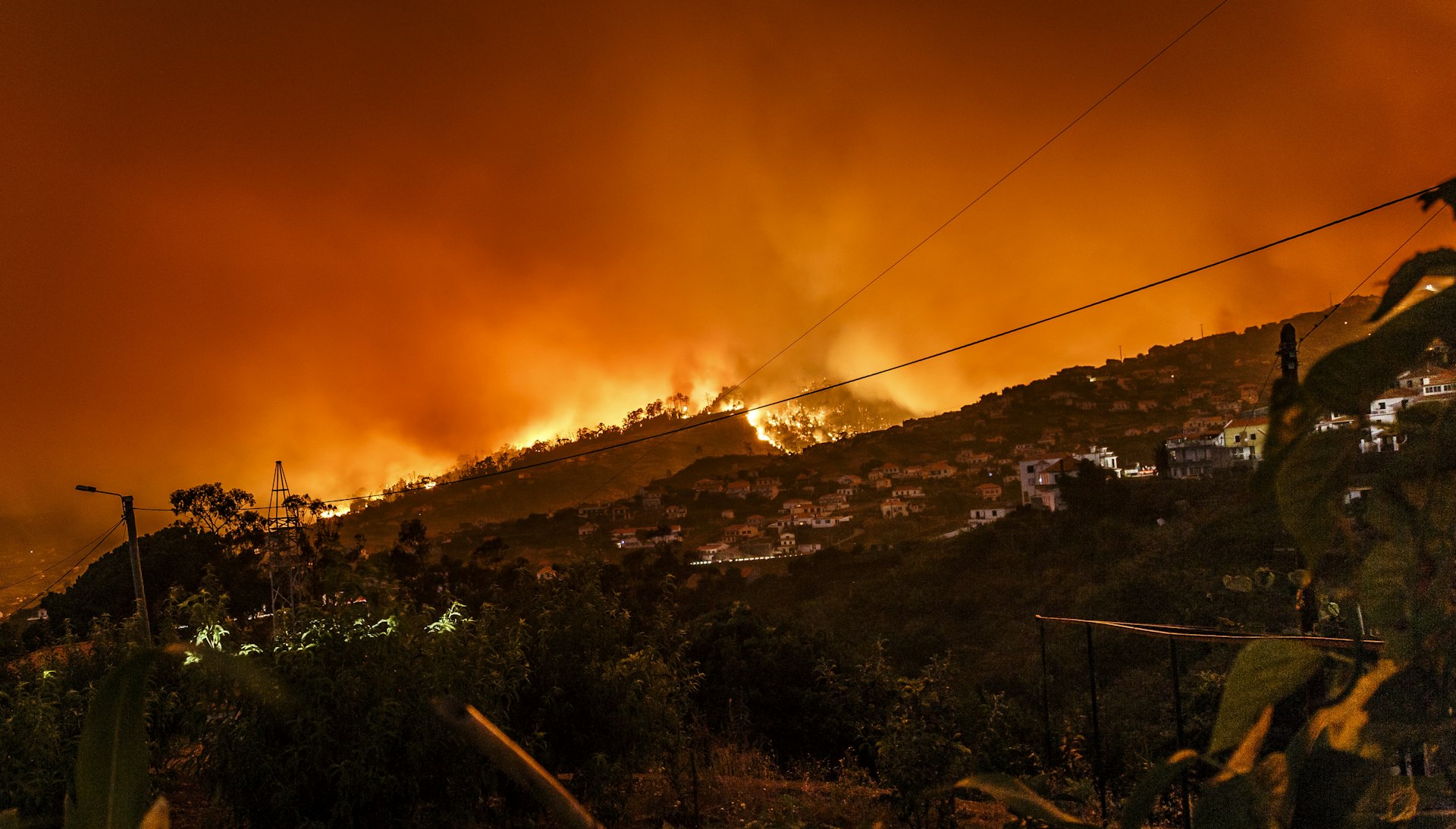
Wildfire and smoke engulfing a town. (Image courtesy of Unsplash)
Even when we aren’t dealing with regional war and Islamic radicals looking to kill Americans on sight, there are threats abroad. What your gas mask can do for you is assure you can breathe clean air despite an emergency or disaster scenario.
Most of the threats we have listed below are active threats around the world. They are also all threats that could affect the safety of the air you are breathing in. Remember: You cannot run to Walmart and buy a CBRN gas mask.
 Fires
Fires
Do you remember looking through the apocalyptic gloom of wildfire smoke from Canada this year? If you were on the East Coast, you would probably never forget it. After all, driving in the lowlight midday felt like stumbling into Stephen King’s The Mist.
Wildfires, of course, are hardly unique to the United States. The European heatwave, for instance, fed some immense fires this year, from France to Jerusalem. In particular, Turkey saw the most damage with 160,000 hectares of forests burned. (For reference, one hectare is about 2.5 acres of land.)
Note that MIRA Safety has created an incredible solution to wildfires: the Wildfire & House Fire Emergency Kit, which is perfect for dealing with wildfires here and abroad.
 Riots
Riots
Learning to do anything well is all about putting in the reps.
Well, at home and abroad, we have been putting in the proverbial reps for protest and street chaos. This is a skill that humans have been really honing for at least three years.
Doesn't seem to be slowing down anytime soon, either. The French in particular love a good protest. Not one to play games, they’ll hit the streets over a fly in the onion soup.
Because the French people are so quick to “demonstrate” (such a great word for putting on yellow vests and setting things on fire), the French police have become marksmen with the ol’ tear gas.
Meanwhile, in Richmond, Virginia, we are often treated to the wafting of pot smoke from moving vehicles. That is our current “scent of freedom.” Well, in France, something considerably more dangerous is in the air. It’s called tear gas, and you might find yourself catching a whiff or even turning a corner into a cloud that has traveled downwind from a–you guessed it–demonstration.
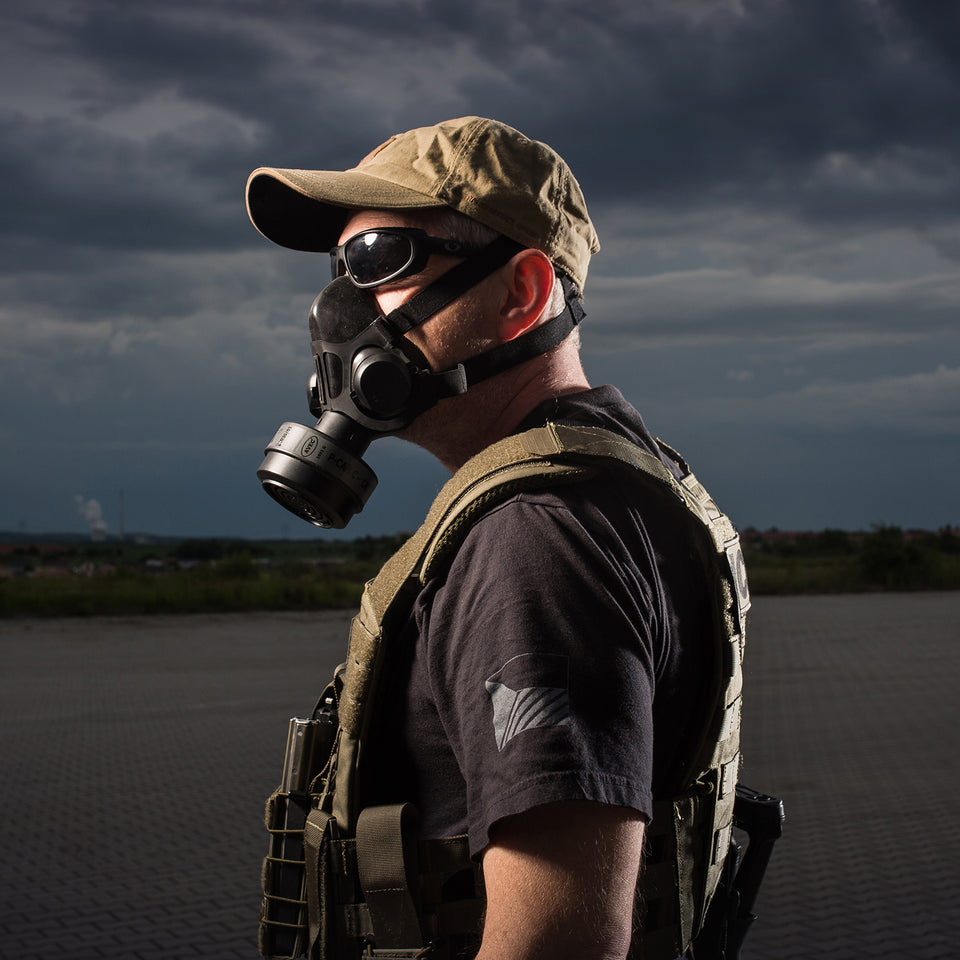
MIRA’s TAPR outfitted with a P-CAN
The P-CAN police riot control filter is popular with police all over the world, as it is designed to protect them from clouds of tear gas. If one of your reasons for bringing CBRN PPE is to deal with potential unrest, then this filter is ideal.
 Nerve Agents
Nerve Agents
In all likelihood, you aren’t adequately prepared to deal with a nerve agent attack. Would you know how to recognize it even if you saw it? With this in mind, we have delineated four crucial steps to take to survive a nerve agent attack, and while these are less common than fires and tear gas, you should still know them.
Note that nerve agents are most dangerous when inhaled. So get your face out of the cell phone and into the real world. If you see people convulsing and falling over at a distance, then the best thing to do is get away from them and to gain elevation, if possible. Remember that nerve gas is heavier than air, so it will sink to the lowest places.
This is why the Japanese subway attack in 1995 was such a success for the crazy cultist group AUM Shinrikyo.
Only a high quality CBRN filter is going to protect you from aerosolized nerve agent. That is assuming you recognize the threat and get your gas mask on in time.
 Volcanoes
Volcanoes
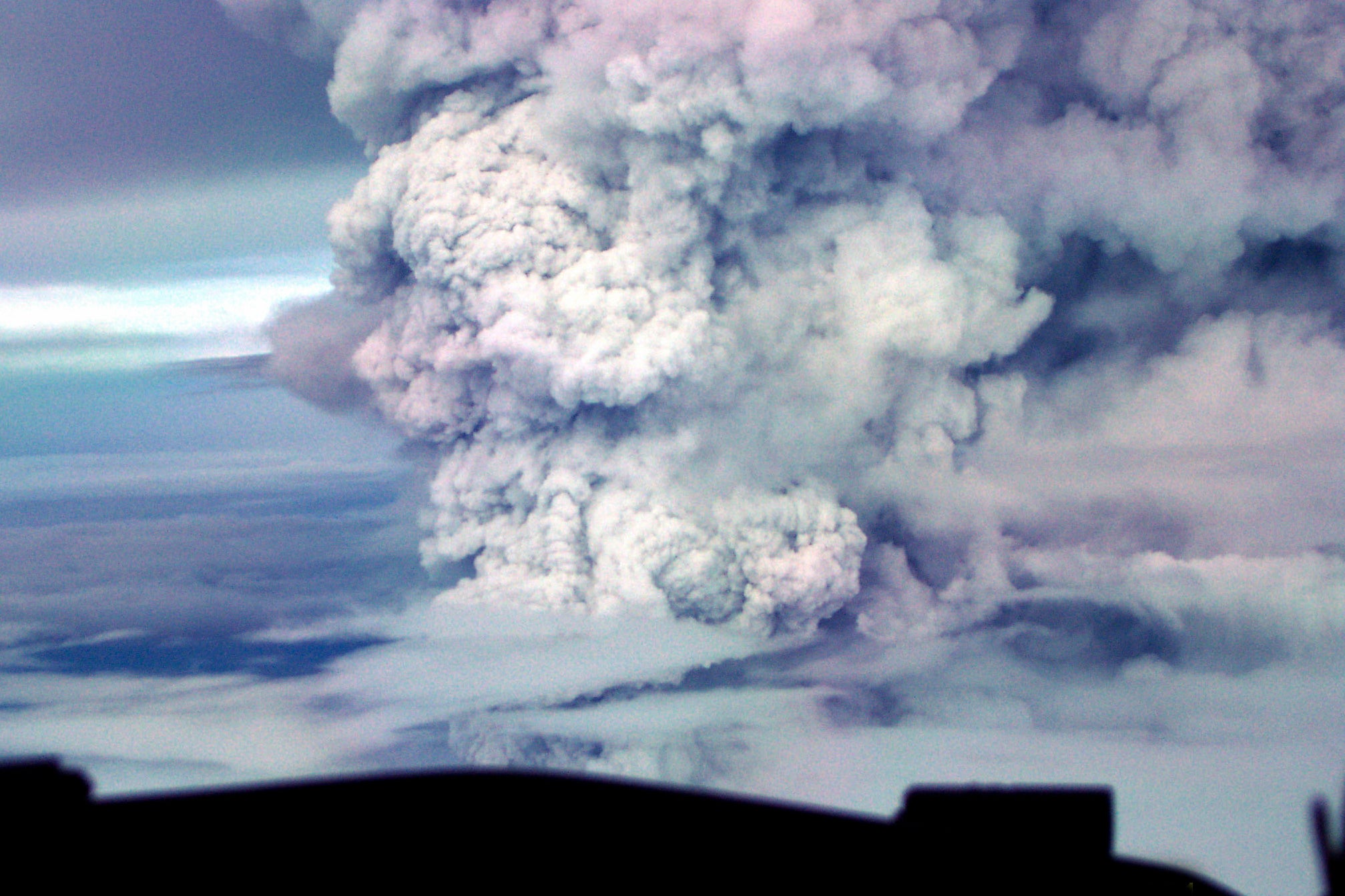
Mount Ulawun erupting miles into the sky. (Image courtesy of Independent.co.uk)
Recently, volcanoes have been making headlines worldwide. In Iceland, a moody volcano is set to erupt, while in Papua New Guinea, a “supervolcano” called Campi Flegrei is set to wake up.
Meanwhile, off the coast of Iwo Jima, a small island was born from an underseas volcanic eruption. Interestingly enough, the island is getting battered by waves, and because of its frail foundation beneath, it will likely crumble into the sea.
Less interesting and more terrifying is what is happening in Papua New Guinea. Mount Ulawun, the nation’s tallest volcano, erupted in a 16,000-foot spectacle of choking ash. It is a sobering reminder of the power of volcanoes–and their capability to hurl massive amounts of ash into the atmosphere, making breathing the air deadly.
 Earthquakes
Earthquakes
It is true that we are measuring more seismic activity than ever before, but we are also seeing the amount of larger earthquakes increase on our planet. Earthquakes, notably, can spawn fires, making CBRN equipment necessary to protect you from smoke and chemicals in the air.
Consider, too, that when earthquakes occur, pipes burst, chemical plants get damaged, and buildings collapse, all sending potentially harmful particulates into the air. And because some earthquakes strike without much warning, you can be left to figure the situation out on the fly.
 Radiological Disasters
Radiological Disasters
Still shrouded in mystery, there have been explosions at the Nuclear Technology Center in Isfahan, Iran. Yes. The place where they could be making a nuclear weapon has had some explosions, and there is a lot of speculation. Yes. The place where they refine Uranium has either had an accident, or has been attacked.
Incredulity aside, radiological disasters happen, and when they do, air quality is almost always going to be impacted for those who are close by. In such situations, any old gas mask filter will not do. You need MIRA’s NBC77-SOF filter to protect you from radioactive particles in the air.
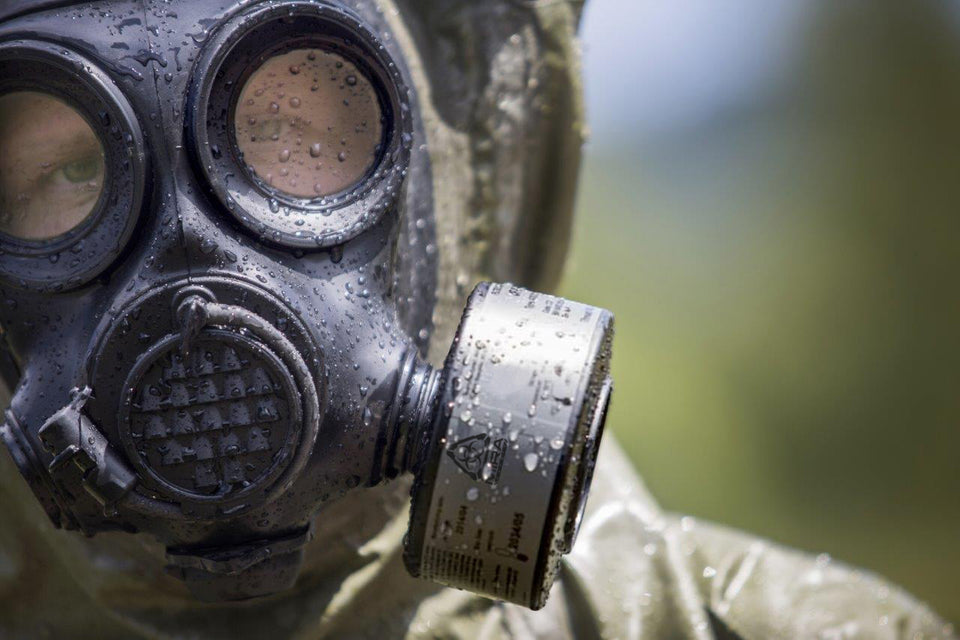
The NBC77-SOF in use with CM-7M gas mask. (Image courtesy of MIRA Safety)
 Nuclear Fallout
Nuclear Fallout
Nuclear weapons are expensive, and the consequence could mean certain doom for the nation launching them, so you better hit your target! For perspective, the U.S. mainland is almost 7,000 miles away from Israel, and nearly 6,000 miles away from Ukraine.
Needless to say, that’s a lot of room for a weapon to screw up! Plus, if it is Iran’s first ever, or one from the Russian stockpile, there is so much risk sending a nuclear weapon so far. Even losing it to a missile defense system is a possibility.
All of this to say that the United States’ geography protects us to a degree. But what about the rest of the world?
Poland, for instance, is a mere 600 miles from Ukraine, and you can drive there on the E373 in about twelve hours. France, meanwhile, is 1,300 miles away over land, and they are a nuclear power.
Case in point? If a mushroom cloud makes prime time news, it is gonna be in the Middle East or Europe. So if you’re planning a getaway to the French riviera, is it such a crazy idea to travel with CBRN equipment–especially at a time like this?
Can you Bring your Gas Mask on a Plane?

A women checking into airline security. (Image courtesy of Wikimedia Commons)
Checked luggage is one thing, and you’d be hard pressed to find an airline that wouldn’t allow a gas mask and filter to be stored safely under the plane. What about your carry-on though? More specifically, what about having a gas mask in your carry-on while you perform the customary walk of shame through security?
 TSA
TSA
If you are flying out of the U.S., your biggest hurdle is going to be the TSA. When you consider bringing a gas mask or any type of CBRN prep onto a plane, you probably have thoughts of watching your pristine CM-8M leave your carry-on in the hands of TSA agent and never seeing it again.
To be sure, TSA agent discretion is a thing, and people can lose items based on discretion. So, it wouldn’t be fair to tell you that bringing a gas mask or gas mask filter is 100% foolproof, because you may have to fight to get it back, should some overzealous TSA agents consider it dangerous.
That said, based on the What Can I Bring page on the TSA website, there is no information that expressly states that gas masks are not allowed on flights. If you search the words “gas mask” and/or “respirator,” you’ll find no no results.
Additionally, gas mask filters are also not on the No Fly List–though a helpful tip is to take them out and open them up for TSA, as they typically like to get a closer look.
 Airlines
Airlines
Contending with the TSA is one layer in traveling with a gas mask; you will also have to consult your airline to see if a gas mask in your carry-on is allowed. As such, your best course of action is to call your airline directly to ask them about gas masks in your luggage.
Look, the world is at war, and everyone is watching. It’s no secret what is happening in the Middle East or in Eastern Europe. As the year progresses, we are also going to see gas masks regularly on the evening news, as the U.S. fires up its civil unrest engine.
Indeed, if current goings on are any indication, the presidential election of 2024 is going to be the most divisive and volatile of our lifetime. This says nothing about the unique disasters in the area you might be traveling. Traveling with a gas mask to a place like Romania is hardly an overreaction right now.
Shipping Gas Masks

Well-dressed woman with a CM-8M gas mask. (Image courtesy of MIRA Safety)
As a civilian, you cannot ship gas masks internationally. This means that whatever sort of respirator you feel is necessary for your trip, you are going to have to bring it with you or purchase it when you are there.
Even if you are visiting friends in another country, you wouldn’t (legally) be able to just ship your CBRN gear to their front door and pick it up when you get there. With that said, there are no rules for gifting gas masks for people overseas. MIRA Safety has no problem shipping its top-tier CBRN equipment all over the world.
If the idea of traveling with a gas mask conjures up too many questions, fears of interrogation in some dirty airport backroom, or just enough anxiety to ruin the trip, buy gas masks for the people you are visiting or friends in the area and have them shipped to their address. That way, you will have CBRN PPE waiting for you.
Air Travel CBRN Go Bag

A gas mask, filter, and bag for storage. (Image courtesy of MIRA Safety)
You cannot get around the awkward conversations and the questions that might come up from TSA as you are asked to pull your CM-7M Military Gas Mask out of the luggage for inspection. Still, you can bring it.
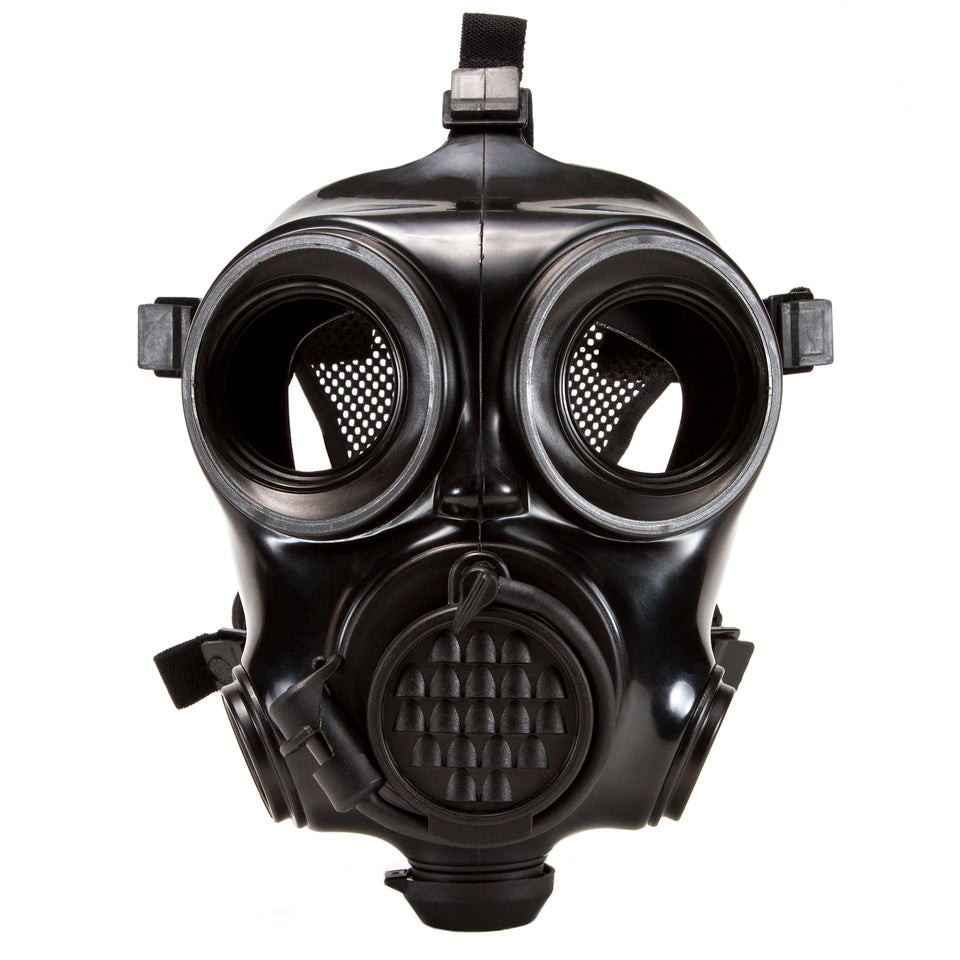
The CM-7M is trusted by police and military in many nations.(Image courtesy of MIRA Safety)
But what else do you bring if you are building out an effective go bag for CBRN-ready travel? MIRA Safety writer Matt Collins’s air travel article–which outlines the contents of a travel-friendly go bag–has the answers.
Besides Gas Masks...
Even if you don’t build out a complete CBRN Go Bag for air travel, there are some things worth carrying for protection.
 Spare Filters
Spare Filters
Filters have a lifespan, and once they are used up, it can become difficult to breathe–dangerous, even. That’s because they can only filter so much before you need to change them. This has a lot to do with how dense the particulate matter is in the air.
With this in mind, pack a spare filter.
 Radiation Detection
Radiation Detection
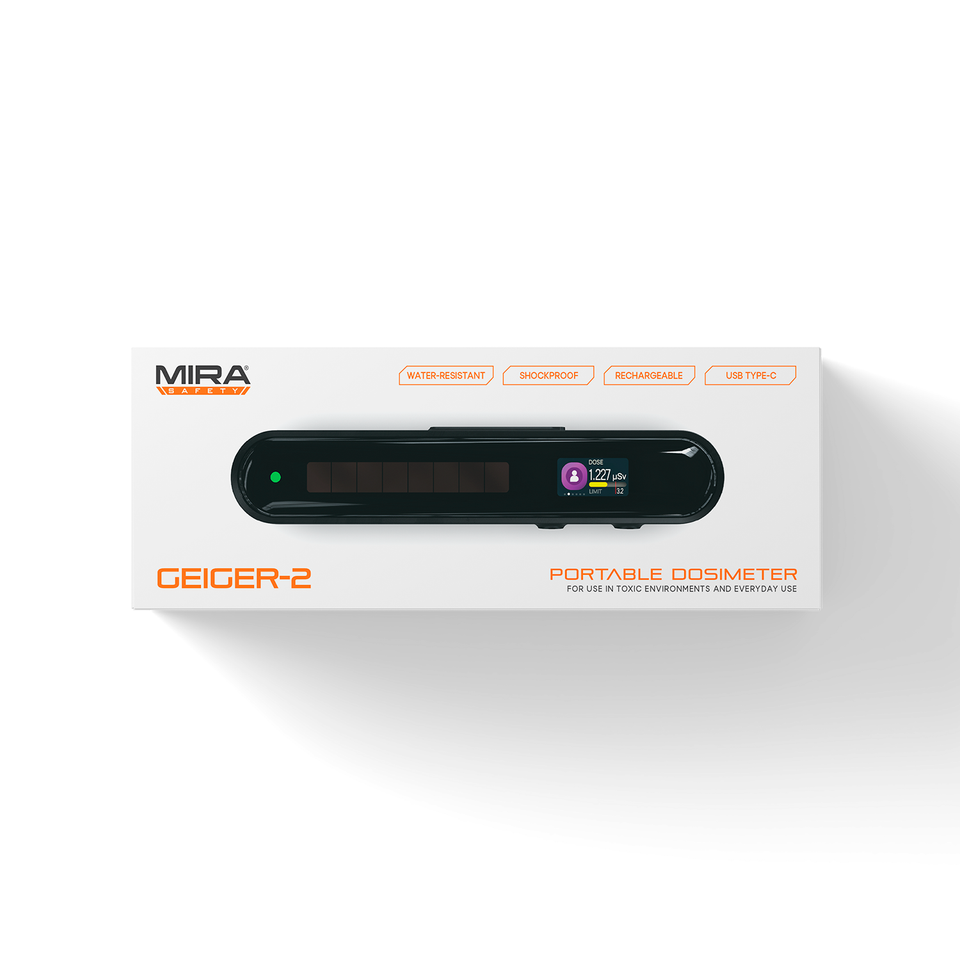
The Geiger-2 is a little larger than a pen and detects harmful radiation. (Image courtesy of MIRA Safety)
In a nuclear or radiological disaster, it helps to have a means of measuring radiation, as it is undetectable using your five senses. Thankfully, the Geiger-2 radiation next gen dosimeter is a portable device that accomplishes that task with ease.
 Drop-leg Pouch
Drop-leg Pouch
Would it make sense to go through the hassle of traveling with a gas mask, only to have it locked away in your room when you need it? And if not, how will you carry it?
Enter the drop-leg pouch, a tactical bag that can be purchased in a variety of colors and used to store things other than your gas mask. For instance, maybe you can keep your camera in the pouch, on top of your mask.
Final Thoughts on Traveling with Gas Masks

Woman on a bus with her gas mask.on. (Image courtesy of MIRA Safety)
Even the most reserved and optimistic take on recent world events would impact the overall threat level. The question is: what are you going to do about that? If threats are increasing, do you travel and operate in exactly the same way as when there aren’t two regional wars happening?
Remember that back in 2020, traveling with masks and various other protective gear to ward off COVID-19 was not just common, it was required! Well, the pandemic and its restrictions disappeared the moment Vladimir Putin’s military crossed the Ukrainian border. At that point, the world took two big hops towards World War III, but the public has largely been left in the dark.
Ultimately, preparedness is your responsibility. So if you are waiting for the day when your “Dear Leader” steps up to the podium and tells everyone to carry a Geiger counter and a CBRN capable gas mask, you’re gonna spend the rest of your life waiting.
